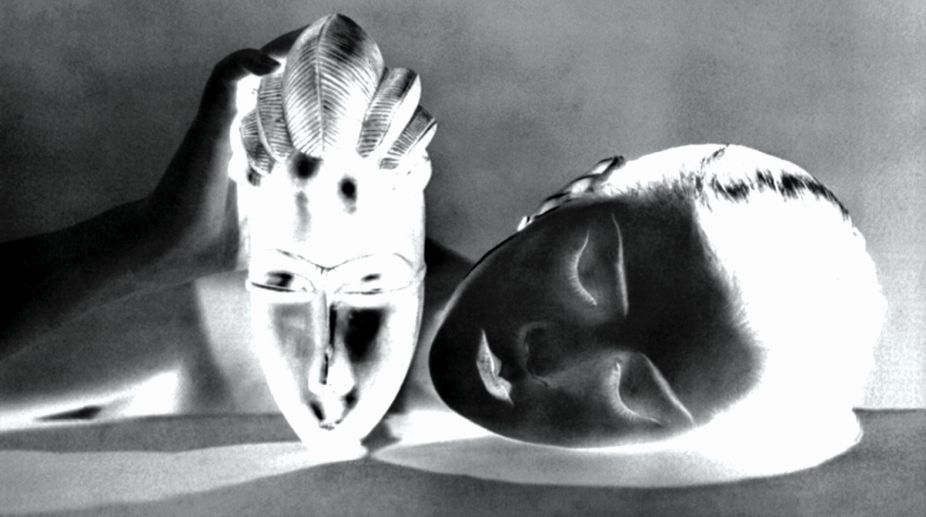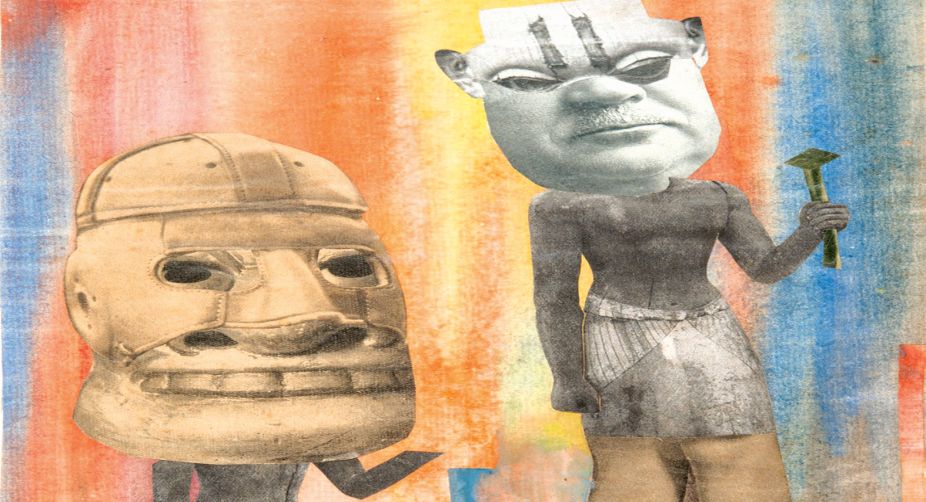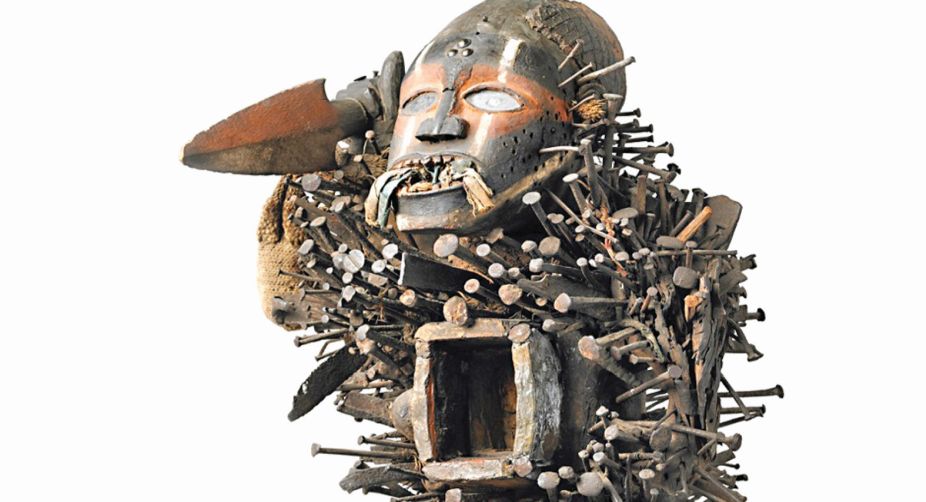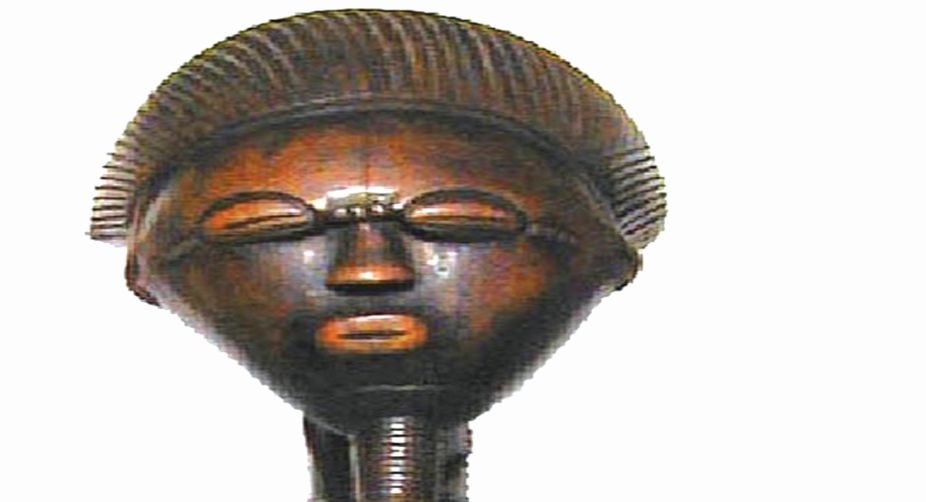‘The ghost just gets in your body’
Antonio Banderas grew up in the same Spanish town as Pablo Picasso. Now, the actor finally gets to play his childhood hero — and defends the painter against accusations of misogyny.

HOCH
The time is ripe already in February. It is spring at the Musée de l’Orangerie in Paris, flushed with tropical heat. The discordant psychedelic aspects of Dada interest in Africa has just been curated in a concerted act of revisionism.
It is much like trying to understand hay fever by recording the testimony of a recent victim. It was an exhibition that exhumed the collision between the Dadaists’ preconceived notions of Africa and actual African cultural artefacts.
Concurrent with the appalling butchery of World War I, Hugo Ball and Emmy Hennings’s Cabaret Voltaire opened its doors on 5 February, 1916, and the tumultuous Dada revolt ensued. The cabaret soon became the epitome of bohemianism by rejecting the conventional Western mores described as “civilised” that had led to such blood-soaked discord.
Advertisement
Placed within the range of vertiginous possibilities and improbabilities released by the effort to end polite society, Cabaret Voltaire’s mischief club took up the theme of transmigration that they perceived in non-Western systems of thought and creation, leading many avant-garde artists to study and adopt radically different types of artistic production.

A jubilant, if lounge lizard’s view of Africa provided the foundation for their chimerical and ever quavering Dada, though the exhibition also contained some influential pieces from North American Hopi tribal culture and Oceania, Asia, and Polynesia.
But clearly, poly-sacred Africa fuelled the Dadaists the most. They were zealots who saw African cultural objects as a powerful indictment of petit-bourgeois privilege (albeit leaving behind the sticky political problems of appropriation and a projected primitivism for us to ponder).
Still, the undeniable power of African art, such as the Nganga’s (a Bantu term for herbalist or spiritual healer) Nkisi n’kondi Magical Personage (pre-1892), was obvious to them. It is a fierce masterpiece from the Congo that understandably helped shape the fever dream of Dada theory, as this gnarled cherished charm was used to resolve disputes, or as an avenger-guardian if malicious sorcery had been perpetrated.
At first, in 1916, the founders and the other early club members – Marcel Janco, Richard Huelsenbeck, Tristan Tzara, Sophie Taeuber-Arp and Jean Arp – focused on the Western cultural products of several artists and writers: composer Igor Stravinsky, poet and editor Filippo Marinetti, Bohemian novelist and poet Franz Werfel, poet Jules Laforgue, poet and art critic André Salmon, novelist and poet Blaise Cendrars, playwright Frank Wedekind, the writer and critic Max Jacob, the poet and critic Guillaume Apollinaire, and the painter Wassily Kandinsky.

However, soon under Huelsenbeck’s driving search for new directions for art, the cabaret became more of a mental playground particularly inspired by an imagined Africa as simulated by gallerist Han Coray.
When Sonia Delaunay-Terk stencilled illustrations for Blaise Cendrars’s poem, written as a stream of consciousness – La Prose du Transsibérien et de la Petite Jehanne de France (1913) -that alternates between his memories of a train journey across Siberia in 1904 and thoughts of his lover, Jehanne, she interspersed patches of colour with the poet’s staggered text, printed in twelve different fonts.
The poem and the illustration both end with references to the Eiffel Tower and the Ferris wheel, two architectural marvels of Paris at that time, further symbolising modernity and the experiences of simultaneity that urban life provided.
O Tour Eiffel!
O Tour Eiffel!
tu es tout
Tour
Sujet de mon poème?
Tour?
Tour du monde?
Tour en mouvement
(Oh Eiffel Tower!
Oh Eiffel Tower!
you are everything
Tower
Subject of my poem
Tower?
World tour?
Moving tower.)
The vortices of the escalating dream, the fever pitch of Cendrar’s implosion from tower and wheel to his tightly held nightmare of having become all-seeing flowed with borrowed colours of African artefacts at the La Trocadéro or the Orangerie in Delauney-Terk’s renditions.
Though full of chutzpah, the Dadaists were theoretically unsophisticated by our standards. Never having visited Africa they relied solely on their impressions of imported works, images, and ethnographic studies that Cory collected and showed in Zurich.
Their faux contact with Africa was as dominant as it was deceptive, and it took hold of the demented Dada spirit, as we see in Tzara’s 1926 Negro Poems and Note on Negro Art. Likewise, Janco’s tribal-like masks, and later, Hannah Höch’s chiding collages looked to African objets d’art for a new formal art language. Höch is the more literal of the two artists in this regard – gluing fragments of Western figures together with pictures of African sculpture.

The singular achievement of “Dada Africa” at the Orangerie was that it straightforwardly presented Dada paintings, sculptures, collages, photo-collages, letters, sound pieces, and photographs cheek by jowl with non-Western cultural objects, like the stunning Masculine Figure (late-19th century) from the Baoulé tribe of the artistically rich Ivory Coast once in the collection of Parisian art dealer Paul Guillaume.
Guillaume was one of the first to organise African art exhibitions in Paris. These came to the attention of Guillaume Apollinaire, who in turn introduced them to many artists, such as Pablo Picasso. Included in this exhibition was Picasso’s Nu sur fond rouge (Nude on a Red Background) (1906), produced just before Picasso started work on Les Demoiselles d’Avignon (The Young Women of Avignon) (1907), a painting that cued advanced art towards Africa-inspired Cubism.
Subsequently, Guillaume organised other important exhibitions of African art, such as the Première Exposition d’Art Nègre et d’Art Océanien (First Exhibition of Negro and Oceanic Art) in 1919. It had a catalogue essay by Apollinaire who had collaborated with Guillaume on the pioneering study Sculptures Nègres (Negro Sculpture) in 1917.
Like Picasso, Dada drew on the same bilious African stereotypes as colonialists, but those excesses are surely the price paid for the works’ wonders. An outstanding piece that sets down this early “exotic” context is a signed copy of Raymond Roussel’s homonymic pun-heavy flamboyant novel (and far-out farrago of a play) Impressions d’Afrique (Impressions of Africa) (1910), a work that features a painting machine that duplicates the colour spectrum of the sky at dawn.
It is this very a priori assault on the pia-matter that delivered colossal creative clout to Marcel Duchamp, manifested in his frivolously lascivious masterpiece The Bride Stripped Bare by Her Bachelors, Even (1915-1923). After seeing the play Impressions d’Afrique, Duchamp started producing paintings depicting mechanised sex acts such as Le Passage de la Vierge à la Mariée (The Passage from the Virgin to the Bride) (1912), and the masterful La Mariée (The Bride) (1912), an inescapable point of reference for the avant-garde in the 20th century.
But other than Roussel’s imaginary Africa, Duchamp seems, in the main, unaffected by the Dada mania for everything African, as does Francis Picabia and his quasi-machine painting entitled Serpentins I (1918) that is correctly placed near Duchamp’s infamous Fountain (1917): the banal porcelain urinal signed with the nom de plume R. Mutt (much brouhaha followed).
It is the same photo that was first published in The Blind Man No. 2; that is Stieglitz’s photograph of Fountain in front of Marsden Hartley’s painting The Warriors (1913). Haunting the scene was also Man Ray’s negative print that has the effect of a blackface statement Noire et Blanche (Black and White, 1926); a portrait of Alice Prin (a.k.a. Kiki de Montparnasse) with her eyes closed and her face lying on a smooth table, her hand holding a whitened African mask because the values are reversed on the table beside her.
Though Ray may not have been disabused of the use of blackface as a potentially racist trope, there is a contested elation in the absurdity of presenting a flip-flopped order to our perceptions of chromatic orthodox reality.
Part of the Dadaists’ revolutionary political ideology was clearly a call for an art that entails choices of figure and ground visibility (what will emerge, what will recede) coupled with an art-without-crisp-borders attitude, as demonstrated when Tzara, Janco, and Huelsenbeck together wrote three poems to be read simultaneously over each other. The Dadaists not only proclaimed freedom from civilization but tried to act upon it in the production of their art.
Of course, from our perspective of post-colonial mindfulness, there is something tendentious about the way they appropriated out-of-context, non-Western cultural objects as a way of raising the psychological stakes.
But the way they saw it, “Africa” was an antidote to the fundamentally asinine judiciousness of European culture, already apparent in the machinations of the privileged dandy Roussel, who used the fanciful idea of Africa both in Impressions d’Afrique and in the poetically convulsive Nouvelle Impressions d’Afrique (New Impressions of Africa, 1932) as a setting for his fantastical tales.
But unlike Roussel’s complicated, obtuse, and interpretation-resistant opuses, the exhibition “Dada Africa” was a conceptually generous and lucid one that invited us to wonder what other appropriations we may have missed on other occasions.
Advertisement